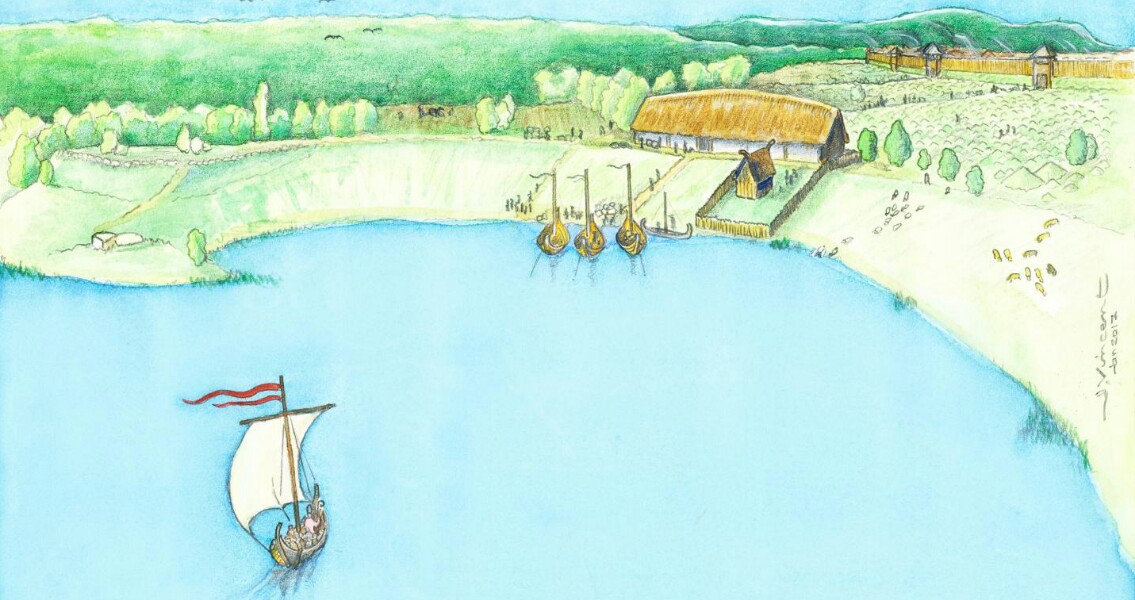<![CDATA[Archaeologists have discovered evidence of a massive Viking manor at Korshamn, Sweden. Measuring around 40 metres long, it is believed the Viking era hall can be dated to around 810 CE. The manor is remarkable, with similar Viking era halls usually only found much further south. "This kind of Viking period high status manor has previously only been identified at a few places in southern Scandinavia, for instance at Tissø and Lejre in Denmark. It is known that the fenced area at such manors was linked to religious activities", said Johan Runer, an archaeologist at the Stockholm County Museum, in a press release from Stockholm University. In spring last year the first hints of the spectacular discovery were unearthed. The authors of the study were carrying out research in Korshamn, Sweden, when they identified what they presumed to be large house terraces. A major harbour bay on the island of Björkö, Korshamn is situated just outside the boundaries of the Viking town of Birka. High resolution geophysical surveys using ground penetrating radar were carried out in September 2016 to see exactly what the researchers from Stockholm University had discovered. The results revealed that a major Viking period hall had been located on the site. The discovery sheds new light on both the history of the region, and the Vikings in general. The survey revealed that a predecessor of the Viking manor had also been on the site. Existing during the Vendel period, the high status manor would have been built prior to the construction of Birka. The identified buildings and their use from the Vendel period into the Viking Age correlate well with the "ancestral property" of Birka's royal bailiff Herigar, described in Rimbert's biography of Ansgar - the archbishop of Hamburg-Bremen who Christianised Herigar and built the first church on his land in around 830 CE. "The consequences of our discoveries cannot be overestimated: in terms of the emergence of the Viking town of Birka, its royal administration and the earliest Christian mission to Scandinavia", explained Sven Kalmring, researcher at the Zentrum für Baltische und Skandinavische Archäologie, Schleswig. Andreas Viberg, researcher at the Archaeological Research Laboratory at Stockholm University, pointed out how the methods used by the team can be used to glean archaeological insights without causing unnecessary disruption or risking damage to buried artefacts. "The results highlight the benefits of using non-intrusive geophysical surveys for the detection of archaeological features and, once again, prove to be an invaluable tool for documenting Iron Age building remains in Scandinavia" The research project was a collaboration between the Archaeological Research Laboratory at Stockholm Museum, Zentrum für Baltische und Skandinavische Archäologie and the Stockholm County Museum. The full results of the study are set to be published in the international scientific journal Archäologisches Korrespondenzblatt volume 2017/1. Featured Image: Reconstruction by Jacques Vincent ]]>
Spectacular Viking Age Manor Discovered in Sweden
